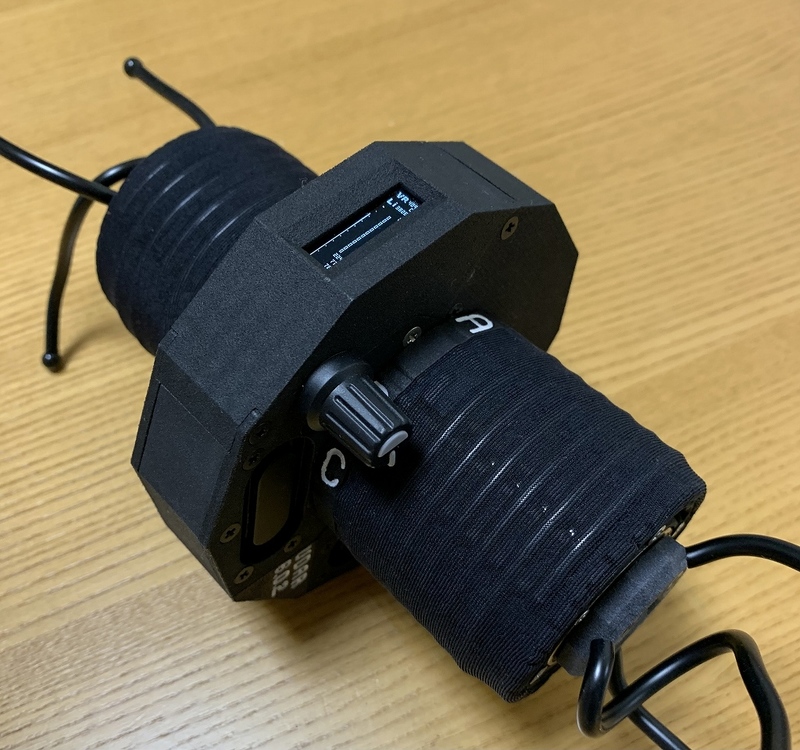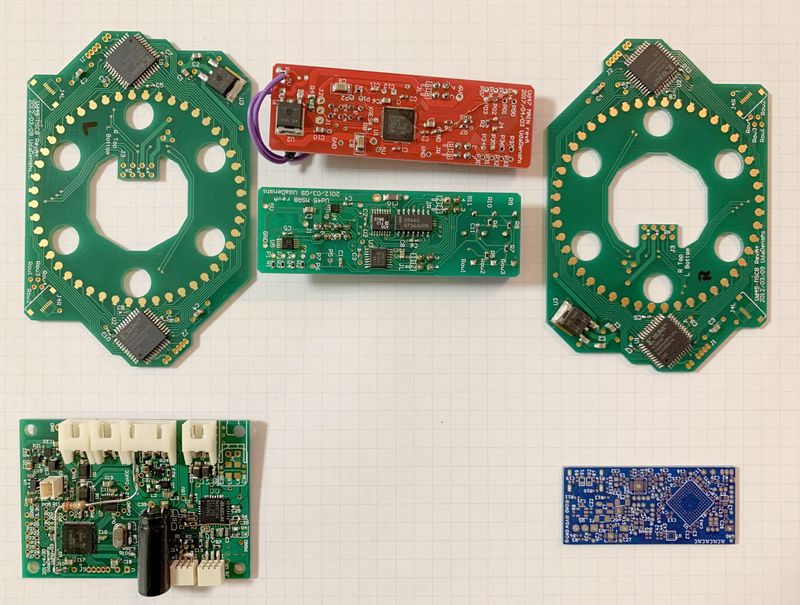Interviews

UDAR: A New Frontier in Electronic Instruments (Part 3)
Michinobu Uda
Michinobu Uda’s development of the UDAR didn’t stop after graduating from the INNO-vation Program. In part 3, we uncover what he learned in that time, and his plans for the future.
Interviewer & Japanese Writer: Yamamoto Takaya; Translation & Editing: Matthew Cherry

The latest fully-functioning UDAR, version 6.0.2.
Long after his time in the INNO-vation Program’s Disruptive Challenge, Uda’s work on the original electrical instrument UDAR continued. Number one on his agenda was to fix the problem he discovered within the INNO-vation Program: the response time of the pressure sensors.
(Part 1 covers his initial concept, part 2 discusses the development process.)
The UDAR is played by pressing your fingers against the rope-like pressure sensors. Total time elapsed from the moment your fingers hit the sensors to the sound being played is an astonishing 4 milliseconds. The sensors that were equipped to the UDAR scanned for pressure pulses 200 times per second, but repeatedly tapping your finger on the sensors made it difficult for them to keep up, resulting in the sound cutting in and out.
“I realized that what was necessary to solve the problem of the pressure pulse sensor lag was to increase the scanning speed from 200 to 1000 times per second. After making some minute adjustments to the driver circuit, I was able to increase the speed to around 1100 times per second. At this speed, sound can be emitted nearly instantaneously at the moment the sensor is touched.”
Furthermore, the circuit boards were optimized and reduced in quantity from four to one. Four passive radiators were installed to help emit the bass, which made the device both lighter and able to play a wider variety of tones.

Comparison of the circuit boards. The bottom right circuit board is currently used in the UDAR 6 series. The other five were used for UDAR 4.7 and UDAR MOBILE.
Uda continued his development in order to create the ideal musical instrument. Throughout this process, Uda explains that he was able to carry out his most important role within the INNO-vation Program.
“You can meet a lot of different people within the INNO-vation Program, and they give PR support as well. If there’s anyone out there with a unique idea, I highly encourage them to apply. Even if you aren’t selected, it’s an incredible chance to sort out what you’ve created, your plans, and what you want to do with your research. Don’t go into it thinking you won’t be selected, but try thinking of how lucky you would be if you were!”
The UDAR was brought to version 4.5 within the INNO-vation Program. Currently, it’s in its 6.0 series. With version 6.1, Uda plans to make the circuits more powerful in order to increase the volume levels on the device.

UDAR 6.0.5’s base directly after 3D printing.
“I really feel that I was able to successfully reach a few summits in the development process: I solved the problem with the pressure sensors, made the UDAR lightweight, and stabilized the volume as well. The 6th series is being made with a 3D printer, so I’ll be able to make 10 or 20 of them without taking too much time. I’d like to further develop the device into a better instrument, get it ready for mass production, and get it into the hands of people who want to try it out in around 2 years time."
Uda envisions the day that the UDAR lands in the hands of people all around the world, raising the curtains on a never-before-seen performance. And with the amazing progress he’s made on development, that day just might be around the corner.
Michinobu Uda’s Profile

